The Submarine Parachute Assistance Group will be testing their rescue capabilities with two jumps from an RAF transport aircraft into the River Clyde near Glasgow for Exercise Clydesplash on Monday.
The Royal Navy say that the Submarine Parachute Assistance Group is a team that provide a rescue support capability to submarine sinking incidents worldwide, available at short notice.
The team is due to conduct two jumps on Monday, at around 3.30pm and 6.30pm.
https://twitter.com/RNinScotland/status/1319553776571830273
It is understood that 43 Commando Fleet Protection Group and the MoD Police’s Clyde force will be present to recover the parachutists.
Here’s last years effort.


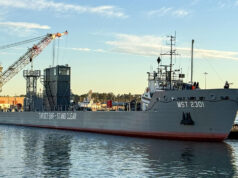
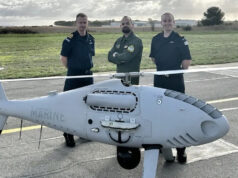
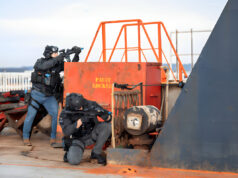
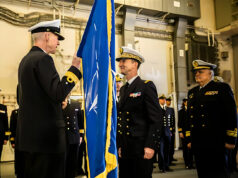
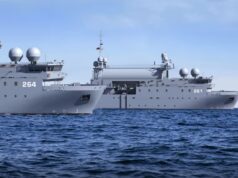
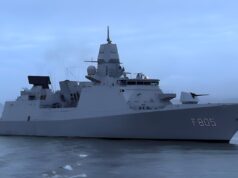
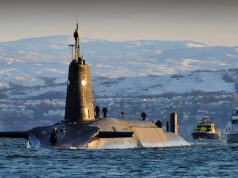
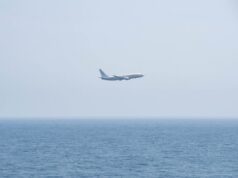
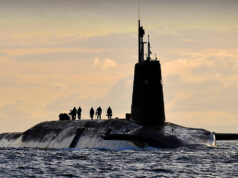


Exercise Clydesplash? Very imaginative name nobody will guess the objective from that!
Never could work out why you’d want to jump out of a perfectly good aeroplane! Lol…
Reminds me of David Chaundler’s deployment to the Falklands to replace H Jones
https://www.iwm.org.uk/collections/item/object/80013855
Was thinking the same thing. I wonder if a short take off and landing turbo prop could land on the QE class if push comes to shove. I guess if the plane couldn’t take off again, it could just be stored out of the way to the conflict was over.
Steve not sure other than possibly a DHC 6 twin otter, not many planes will stop on QNLZ length, 1/2 load take off roll is 240M, up to 50ft is 350M on the pluside its just narrow enough to go up the ramp so that’s might help.
I continue to wonder to STOL planes and the carriers. Planes that could land on and take off (especially with a guaranteed headwind) do exist and could provide COD and maybe AEW platforms for a fraction of the cost of rotary wing solutions.
Would be interesting to know what they actually do to rescue a submarine!
If the crew have to initiate an escape, then the SPAG are on hand with Ribs/liferafts and rescue equipment to assist the crew as they reach the surface, until further help arrives in the form of a ship/ships.
That’s the NSRS at Faslane. As Deep says these guys are the rapid reaction outfit, made up of sub rescue instructors, who get their feet wet asap. A transports always on stand by at Lyneham with the kit packed.
As far as I understood SPAG are useful for if escape is possible so only ‘shallow’. NSRS For deep rescue, D.M do you know if SPAG attach to NSRS when deployed can’t seem to find out but to me it would make sense.
I don’t know LT.
Yes, if the sub is deep I assume the crew won’t be using the procedures they learn at the SETT due to depth, so NSRS might be able to attach.
If they can escape to the surface, as you say shallower depth, that’s when they’re in need and SPAG are in the water ready to help.
I know little more than this, submarine service guys here like Andy P could detail far more than I ever could.
And I mentioned Lyneham! Oops, only several years out if date. Brize.
Preferred method of escape is always NSRS, as it’s the safest method. Rush/Tower escapes add risk to the procedure.
Method of escape is driven by a variety of factors, starting with conditions onboard, if ok you sit tight for as long as possible. Next is conditions on the surface against time of assistance arriving, the longer you spend onboard, the less time you spend in cold water. Deciding factor is always conditions onboard, if you have to go, you go.
Depth is a relative factor, Rush/Tower escape is good for anywhere on continental shelf, SPAG have trialled this escape from 700 odd feet in a Norwegian fjord as far as I can recall. Anything deeper and NSRS is a must, it’s all about choices in the end.
Thanks. Deep, I’ve always been fascinated by what’s taught at the SETT after I saw the article in Navy News. They seemed to be literally assuming a position, holding their breath, and floating up while exhaling. From 700 feet?
Of the 2 types of ascent, Tower is the safer, in a escape suit breath normally all the way up, fantastic experience. With a Rush escape you have to breath out all the way up, as the air in them expands as the pressure decreases. Get that wrong and your lungs will pop.
Believe the actual depth was closer to 750feet, it was done from an O boat I believe.
Thanks. Jesus. Respect from me.